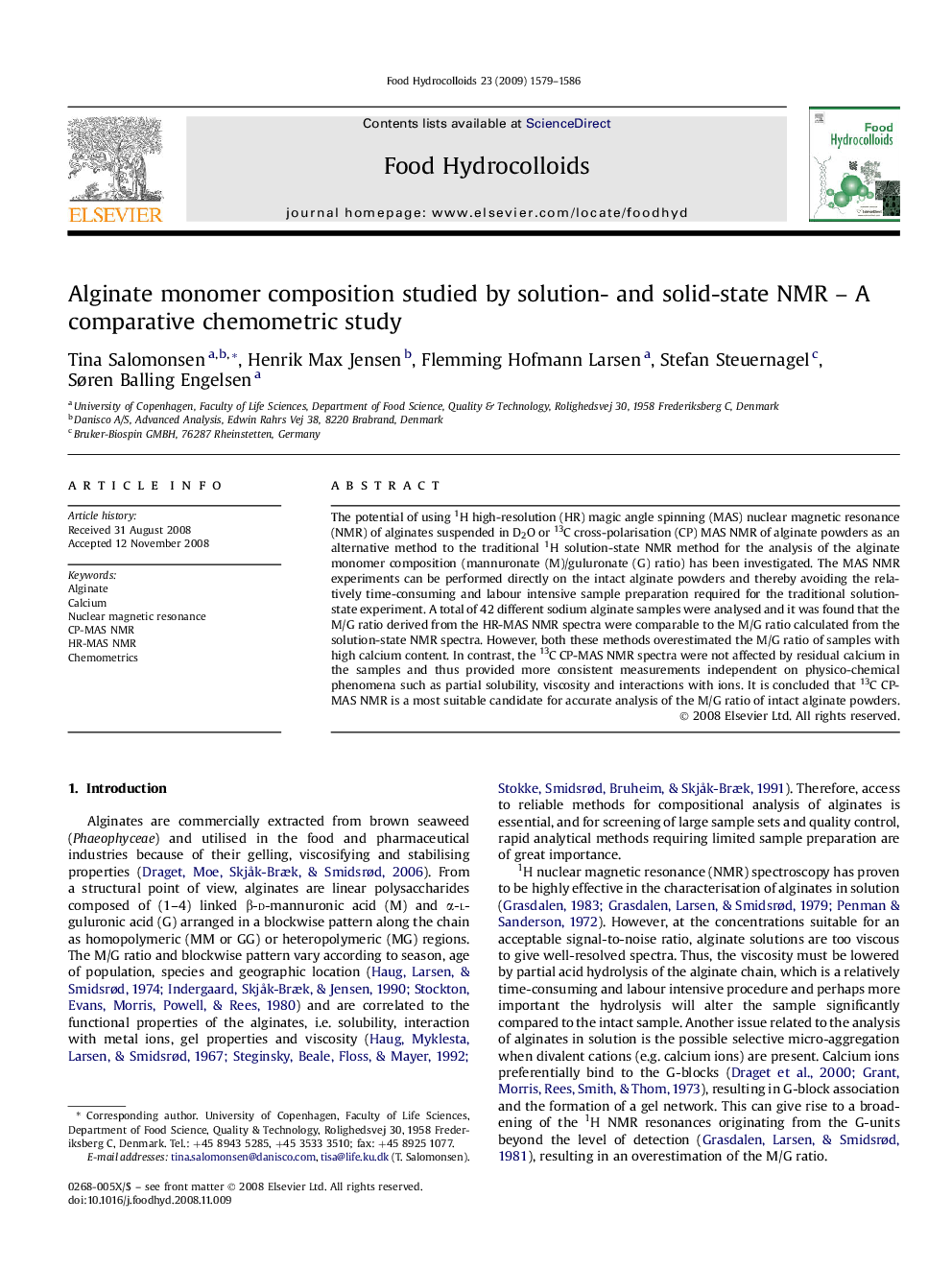| Article ID | Journal | Published Year | Pages | File Type |
|---|---|---|---|---|
| 604826 | Food Hydrocolloids | 2009 | 8 Pages |
Abstract
The potential of using 1H high-resolution (HR) magic angle spinning (MAS) nuclear magnetic resonance (NMR) of alginates suspended in D2O or 13C cross-polarisation (CP) MAS NMR of alginate powders as an alternative method to the traditional 1H solution-state NMR method for the analysis of the alginate monomer composition (mannuronate (M)/guluronate (G) ratio) has been investigated. The MAS NMR experiments can be performed directly on the intact alginate powders and thereby avoiding the relatively time-consuming and labour intensive sample preparation required for the traditional solution-state experiment. A total of 42 different sodium alginate samples were analysed and it was found that the M/G ratio derived from the HR-MAS NMR spectra were comparable to the M/G ratio calculated from the solution-state NMR spectra. However, both these methods overestimated the M/G ratio of samples with high calcium content. In contrast, the 13C CP-MAS NMR spectra were not affected by residual calcium in the samples and thus provided more consistent measurements independent on physico-chemical phenomena such as partial solubility, viscosity and interactions with ions. It is concluded that 13C CP-MAS NMR is a most suitable candidate for accurate analysis of the M/G ratio of intact alginate powders.
Related Topics
Physical Sciences and Engineering
Chemical Engineering
Colloid and Surface Chemistry
Authors
Tina Salomonsen, Henrik Max Jensen, Flemming Hofmann Larsen, Stefan Steuernagel, Søren Balling Engelsen,
